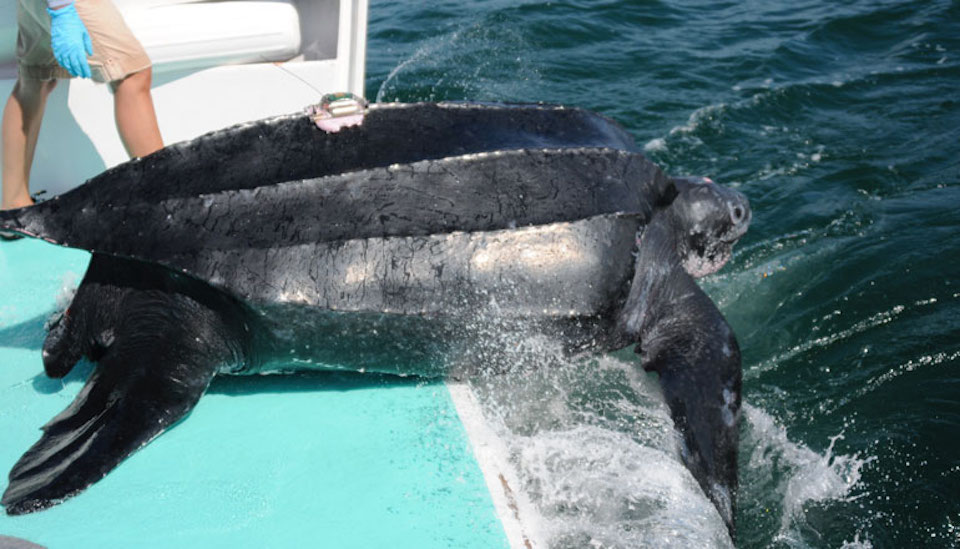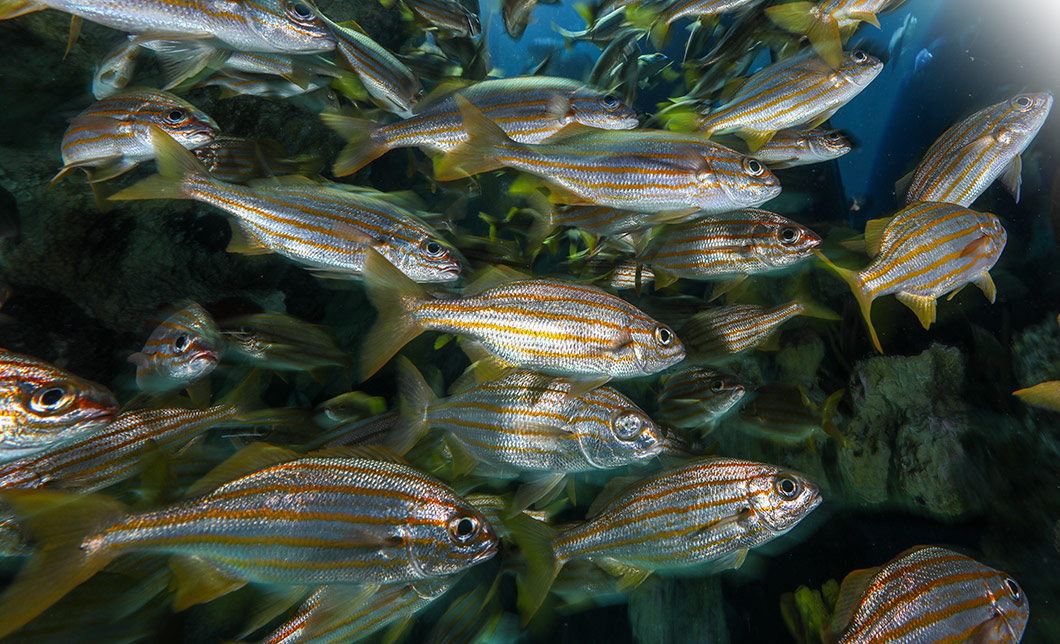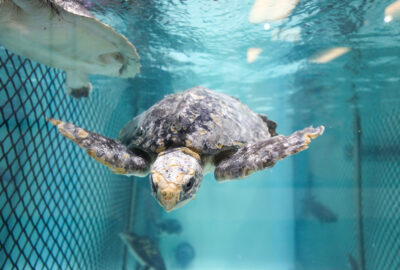The New Balance Foundation Marine Mammal Center will be closed for exhibit maintenance on Monday, May 6.
Paper: Studying Stranded and Entangled Leatherback Sea Turtles
By New England Aquarium on Tuesday, July 12, 2016


New research from the Anderson Cabot Center for Ocean Life at the New England Aquarium shows that the world’s largest sea turtles suffer moderate to severe increases in both a key stress and a metabolic hormone when entangled or stranded. The study recently published in the journal Conservation Physiology (downloadable pdf 1.2MB) documents much higher levels of corticosterone, a stress hormone released by the adrenal gland, and thyroxine, a regulator of metabolism, in stranded or entangled leatherback sea turtles compared to healthy individuals. Leatherbacks are highly endangered and often become entangled in vertical lines in the water attached to either fixed fishing gear or boat moorings. They are also often struck by small vessels.
Collecting blood and building data sets in the world’s largest sea turtle species was challenging as adults can weigh more than 1000 pounds and measure up to seven feet long. Leatherback sea turtles primarily feed on sea jellies in open ocean environments. They rarely strand because of the distance of their preferred habitats from shore. These giant, black, soft-shelled reptiles have also never been kept in aquarium environments as they have an inability to recognize the solid barrier of a pool or tank edge.
To build these data sets, Aquarium staff gathered hormone and other medical data during rescue missions for injured leatherbacks and collaborated with colleagues at the University of New Hampshire to study healthy leatherbacks off the coast of Massachusetts. As part of the project, the researchers performed veterinary assessments of live leatherbacks brought on to the deck of a lobster boat, conducting a physical exam and taking blood samples just after the turtle was brought aboard the vessel and just prior to its release. Since leatherbacks so rarely come ashore alive in New England, the samples for entangled and distressed animals took seven years to gather.

Below is the abstract for the paper and attached is the full paper:
Leatherback turtles (Dermochelys coriacea) are exposed to many anthropogenic stressors, yet almost no data on stress physiology exist for this species. As a first step toward understanding the physiological responses of leatherback turtles to stress, and with the particular goal of assessment of the effect of capture, we quantified corticosterone (an adrenal stress hormone) and thyroxine (a regulator of metabolic rate, often inhibited by chronic stress) in 17 healthy leatherback turtles captured at sea for scientific study, with comparisons to 15 ‘distressed’ leatherbacks that were found entangled in fishing gear (n = 8), confined in a weir net (n = 1) or stranded on shore (n = 6). Distressed leatherbacks had significantly elevated corticosterone (mean ± SEM 10.05 ± 1.72 ng/ml, median 8.38 ng/ml) and free thyroxine (mean 0.86 ± 0.37 pg/ml, median 0.08 pg/ml) compared with healthy leatherbacks sampled immediately before release (after ∼40 min of handling; corticosterone, mean 4.97 ± 0.62 ng/ml, median 5.21 ng/ml; and free thyroxine, mean 0.05 ± 0.05 pg/ml, median 0.00 pg/ml). The elevated thyroxine in distressed turtles compared with healthy turtles might indicate an energetic burden of entanglement and stranding. Six of the healthy leatherbacks were sampled twice, at ∼25 and ∼50 min after the time of first disturbance. In all six individuals, corticosterone was higher in the later sample (earlier sample, mean 2.74 ± 0.88 ng/ml, median 2.61 ng/ml; later sample, mean 5.43 ± 1.29 ng/ml, median 5.38 ng/ml), indicating that capture and handling elicit an adrenal stress response in this species. However, the corticosterone elevation after capture appeared relatively mild compared with the corticosterone concentrations of the entangled and stranded turtles. The findings suggest that capture and handling using the protocols described (e.g. capture duration <1 h) might represent only a mild stressor, whereas entanglement and stranding might represent moderate to severe stressors.
Read the full paper (pdf 1.2MB).





